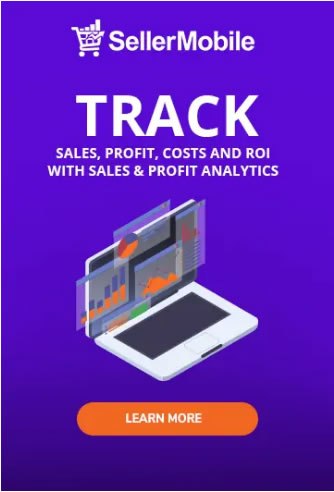I always like to share my own experiences of when I was first starting to sell on Amazon and things I didn’t necessarily know to even look out for, because I didn’t realize the impact it could have. Prime example – allowing competitors to hijack my Amazon listings! Amazon hijackers are those sneaky, boogeyman-in-the-basement type creepers – scary but preventable roadblocks that shouldn’t hold you back on your road to Amazon success.
In this post, I’m going to share what Amazon listing hijacking really is and how to prevent it from happening.
What is Amazon Listing Hijacking?
So, let’s say you take weeks and months to perfectly curate and develop an Amazon listing. It has the perfect image, brand representation, description, and it even has customer reviews raving about the exemptional quality. When a competitor, a third-party seller, or distributor jumps on this private label product listing and offers the same (or knock-off version) of your product, at a lower price, they’ve “hijacked” your listing. They’ve “hijacked” your hard work and private label promise of “exceptional quality.”
This can become frustrating because the third-party seller might steal your Buy Box placement, resulting in fewer sales, and potentially bad product reviews.
What is Buy Box?
I shop a lot on Amazon. Probably more than I should, but I’ll just use my three kids as an excuse for excessive online shopping! Anyway, products that are easier to purchase, with one click – tend to win my money.
The quick “add to cart” box to the right of the screen makes purchasing simple and is the advantage of Buy Box placement. When you are the seller that has the Buy Box, you will be the one that gets the most sales. When hijackers take over your listing and reduce the price, you lose this placement on your own product!
How can I prevent Amazon hijackers from taking over my listing?
Here are a few simple steps you can take to prevent your listing from being hijacked.
1. Check your listings constantly
Don’t let Amazon hijackers ruin your stellar reputation, clientele, or reduce your sales. Monitor your listings regularly to protect your private label / brand and listings. Of course, it gets difficult to monitor all of your listings, all of the time. Hence, this is something that I couldn’t afford to place a lot of attention to when I started selling on Amazon. I had to use a third-party software to help me continuously monitor these piggybackers (or boogeyman…)!
Use “Alerts and Notifications” offered by SellerMobile to monitor when someone hijacks one of your listings! Don’t let the fear of hijackers keep you from participating in the world of Amazon selling.
How does this tool work?
24/7 Monitoring: Our Alerts and Notifications tool will monitor all your ASINs round the clock so you don’t have to do it yourself.
Real-Time Alerts: If a change is detected, you’ll get an instant alert via email or text so you can immediately take action in your seller account. Here are the different types of alerts you can receive.
Product Listing Alerts
- Title change
- Image change
- Bullets change
- Best seller ranking
- Category
- Adult product flag
- Buy Box
- Amazon Brand Name
Account Alerts
- Daily sales and lost sales summary
- Out of stock items
- New hijackers
- New orders
- Storage fees
- PPC fees
- Negative feedback
- Shipment status change
- +10 other account changes
Multiple Amazon Marketplaces: You don’t even have to worry if you have more than one Amazon account. SellerMobile covers all your accounts in one place.
2. Get your brand registered with Amazon
Like bullies, Amazon hijackers look for easy targets and avoid sellers that they feel like they won’t be able to fight back.
If you’re eligible, sign up for Amazon’s Brand Registry to give your brand additional protection. Amazon will use whatever information you provided about your brand to proactively remove suspected infringing or inaccurate content. These include:
- Product listings that aren’t for your brand and are incorrectly using your trademarked terms in their titles.
- Images that use your logo to sell products that don’t carry your brand name.
- Sellers shipping products from countries wherein you do not manufacture or distribute your brand.
- Product listings created with your brand name when you have already listed your full product catalog on Amazon
Although I can’t guarantee that your listings will never be hijacked, registering your brand will give you more control over your listings so nobody can change it without your consent.
3. Add value to your listing
If you’re sourcing your items from China, on Alibaba to be exact, chances are there are about thousands of other products that look like yours. Mind you, hijackers attack product listings that are the easiest to replicate.
One of the best ways you can do to avoid getting hijacked is by offering something completely unique. Something that can’t be easily copied or mass-produced. For example, if you sell colored markers, you can have it come in a specially crafted storage case.
Another great way of getting rid of these copycats is by bundling unlike products together. Offering unique bundles will make it more difficult for them to counterfeit your items, since they will have to go through the trouble to find these annoying matching items. What’s more, if someone lists a product under your listing that doesn’t match your bundle exactly, Amazon will remove it straight away. On the brighter note, shoppers love buying bundles of products, especially if they’ve been put well together.
Let’s say, you sell backpacks. Instead of listing backpacks by themselves, you might want to make bundles that include straps and locks. These might mean a little bit of extra work but it will save you time in the long run.
4. Create a website for your brand
You don’t need to know coding to create a website for your brand. There are a lot of free eCommerce sites out there that will help you start selling online right away.
To get started, build a simple website which includes your brand name, logo, address and all the details of your business. Make sure whatever information you have on your website matches those on your Amazon seller account. You would also want to display your logo and trademark on your product images and packaging – both on your website and Amazon storefront. This will make it easy for your customers to identify the authenticity of your product on their own.
Wrapping This Up
As an Amazon seller myself, I want to help you out-maneuver these hijackers and counterfeiters so you can succeed in growing your business. Don’t let them ruin the amazing reputation you’ve tirelessly built for yourself on Amazon.
Although dealing with Amazon piggybackers is an ongoing challenge, you can avoid it by doing these four preventive strategies. If you need help on how you can further protect your listings from being hijacked and streamline your processes, get in touch with us today.






